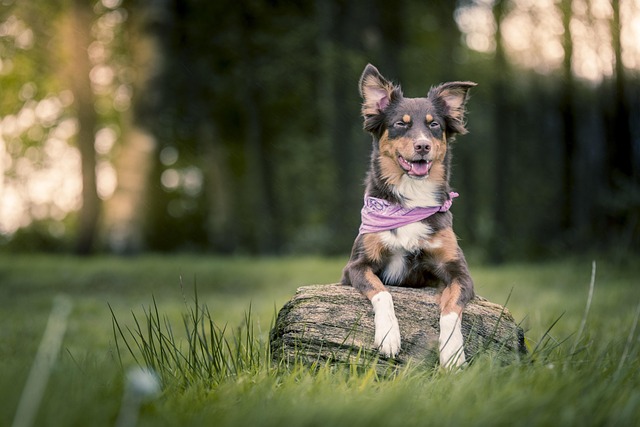
How to train a dog to bite back?
Training a dog to have defensive biting ability is not merely about releasing its attack instincts. Instead, it is based on a high level of trust between humans and dogs.
Training a dog to have defensive biting ability is not merely about releasing its attack instincts. Instead, it is based on a high level of trust between humans and dogs. Through scientific and systematic training, dogs can establish clear behavioral boundaries. The cultivation of this ability not only relates to the dog's practical combat skills but also carries the deep emotional bond between the owner and the dog. It requires trainers to deeply integrate professional knowledge with humanistic care while respecting life.
A dog's biting behavior originates from its primitive instincts as a predator, and these instincts are gradually reshaped during the domestication process. In the early stages of training, it is first necessary to accurately assess the dog's personality traits. Dogs with high excitability, strong fetching desire, and stable neurological types are often more suitable for defensive biting training. Take German Shepherds as an example; they have excellent working ability and obedience. However, even so, trainers still need to build a solid emotional connection through careful observation and interaction. Every time they make contact, they should call the dog's name in a gentle tone, give appropriate strokes, and offer snack rewards. This gradually eliminates the dog's vigilance towards unfamiliar environments and training equipment, making it feel the trainer's kindness and safety.
The core of defensive biting training lies in establishing conditioned reflexes. In the initial stage, use fetching objects made of soft fabric and associate them with the dog's favorite food or games. When the dog actively touches the fetching object, immediately give positive feedback, such as commands like "good" or "great," accompanied by snack rewards. As the dog's interest increases, gradually extend the fetching time and distance. During this process, trainers must always pay attention to the dog's condition to avoid causing boredom or fear due to overtraining. Once the dog forms a stable conditioned reflex to the fetching object, start introducing the command "bite." After giving the command each time, use the fetching object to guide the dog to make a biting motion. Reinforce this association repeatedly so that the dog closely links the command with the biting behavior.
 After the dog initially responds to the command, it is necessary to introduce simulated threat scenarios to help the dog establish the behavioral logic of defensive biting. However, the intensity and authenticity of these simulations must be strictly controlled to ensure that the dog is not harmed. Trainers can wear protective clothing, hold special bite sleeves, and make exaggerated threatening movements at a safe distance while giving the "bite" command. When the dog bravely rushes forward to bite, give full encouragement and rewards. As training progresses, gradually increase the complexity and difficulty of the simulated threats, such as changing the threatener's movements, sounds, and positions, so that the dog can accurately execute defensive biting commands in different situations.
After the dog initially responds to the command, it is necessary to introduce simulated threat scenarios to help the dog establish the behavioral logic of defensive biting. However, the intensity and authenticity of these simulations must be strictly controlled to ensure that the dog is not harmed. Trainers can wear protective clothing, hold special bite sleeves, and make exaggerated threatening movements at a safe distance while giving the "bite" command. When the dog bravely rushes forward to bite, give full encouragement and rewards. As training progresses, gradually increase the complexity and difficulty of the simulated threats, such as changing the threatener's movements, sounds, and positions, so that the dog can accurately execute defensive biting commands in different situations.
However, the key to training defensive biting ability is the ability to "release and retract freely." After the dog has mastered biting skills proficiently, training the "release" command becomes particularly important. When the dog bites the bite sleeve, give the "release" command while using snacks or other rewards to attract its attention. Immediately give a reward when the dog releases its bite. Through repeated training, the dog will understand that it must stop biting when it hears the "release" command. This is not only a standard for the dog's behavior but also an important link to ensure public safety. A well-trained defensive dog should be able to accurately judge when to attack and when to stop under the owner's command, rather than becoming an out-of-control attack machine.
Emotional communication runs through the entire training process. Dogs are not cold training tools; they can keenly perceive the trainer's emotional changes. When a dog performs well, the trainer's sincere hugs and praise can make the dog feel a strong sense of achievement and satisfaction. When the dog makes mistakes, patient guidance and encouragement can promote its progress far more than scolding. During breaks in intensive training, engaging in relaxed game interactions with the dog, such as throwing a ball or chasing, helps relieve the dog's stress and consolidate the trust between them.
It is worth emphasizing that training a dog's defensive biting ability must adhere to strict moral and legal norms. This ability should only be used when facing real threats and when other methods cannot ensure safety. Trainers have a responsibility to ensure that dogs do not cause harm to innocent people or animals. At the same time, they must also do a good job in daily management and restraint to avoid disputes or dangers caused by the dog's out-of-control behavior.
Training a dog's bite-and-return ability is a journey that intertwines professionalism and emotion. It requires trainers to use scientific methods as the foundation and deep emotions as the bond. On the premise of ensuring safety and following norms, they can cultivate a partner that not only has excellent defensive capabilities but also is gentle and controllable.

Training a dog to have defensive biting ability is not merely about releasing its attack instincts. Instead, it is based on a high level of trust between humans and dogs.

When we watch dogs sniffing around with curiosity, their smart eyes flashing with the light of exploration, we will realize their innate instinct of exploration.

When your lovely Teddy suddenly bares its tiny teeth and nibbles at your fingers or clothes, or accidentally scratches your skin during play,

In the morning, sunlight filters through the window into the room as you carry a bowl of carefully prepared dog food toward the shepherd dog.

In the world of dogs, smell is their unique language for perceiving the outside world and a mysterious bridge for communicating with humans. Dogs' sense of smell is dozens or even hundreds of times more sensitive than that of humans.

When dogs explore the world with their teeth, furniture often becomes their "teething victims." This not only frustrates owners but also reveals the deeper needs behind their behavior.